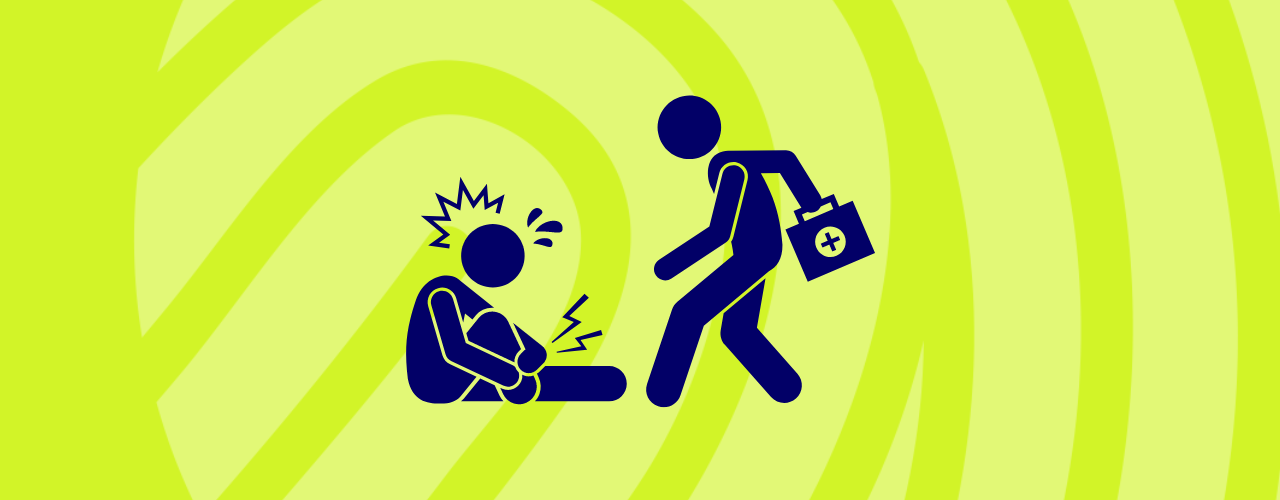Login
Your link will open in a new tab
If this has not happened, please click here
If this has not happened, please click here

When it comes to workplace safety, being prepared for the unexpected is crucial. While we all hope that emergencies never happen, the reality is that accidents can occur at any time. That’s why understanding first aid basics is essential for every employee. Whether you’re in an office, a warehouse, or out in the field, knowing how to respond in an emergency can make a significant difference. Here’s what every employee should know about first aid.
First aid is the immediate assistance given to someone injured or suddenly ill before professional medical help arrives. Quick, informed action can prevent a situation from worsening and, in some cases, save a life. Understanding basic first aid ensures that you’re not just a bystander but an active participant in workplace safety.
Assessing the Situation
The first step in any emergency is to ensure your safety and the safety of others. Check the scene for any immediate dangers, such as electrical hazards, fire, or toxic fumes. If the environment is unsafe, do not approach the injured person. Instead, call for professional help.
Calling for Help
Always call emergency services as soon as possible in a serious situation. Provide clear information about the location, nature of the emergency, and the condition of the injured person. If you’re in a large facility, know the specific procedures for contacting internal emergency responders.
CPR (Cardiopulmonary Resuscitation)
CPR is a life-saving technique used when someone’s breathing or heartbeat has stopped. Every employee should be familiar with the basics of CPR. This involves chest compressions and rescue breaths to keep oxygenated blood flowing to the brain and other vital organs until professional help arrives. Many workplaces offer CPR training—take advantage of it.
Using an AED (Automated External Defibrillator)
An AED is a device that can help restart a heart that has stopped beating. They are often found in workplaces, and knowing how to use them is crucial. The device provides step-by-step instructions, but training will make you more confident in an emergency.
Controlling Bleeding
If someone is bleeding heavily, the immediate goal is to control the bleeding to prevent shock. Apply pressure directly to the wound with a clean cloth or bandage. If the bleeding is severe, raise the injured limb above heart level if possible and keep applying pressure until help arrives.
Treating Burns
Burns are a common workplace injury. For minor burns, cool the area with running water for at least 10 minutes. For more severe burns, do not apply ice, creams, or ointments. Cover the burn with a clean, non-stick cloth or bandage, and seek medical attention immediately.
Dealing with Choking
Choking can quickly become life-threatening. If someone is choking and unable to speak or breathe, use the Heimlich manoeuvre to dislodge the object. Stand behind the person, wrap your arms around their waist, and give quick, upward thrusts until the object is expelled.
Recognising and Responding to Shock
Shock is a critical condition that can result from severe injuries, blood loss, or trauma. Symptoms include pale or clammy skin, rapid breathing, and weakness. If you suspect someone is in shock, lay them down with their feet elevated, keep them warm, and do not give them anything to eat or drink. Seek medical help immediately.
Every workplace should have accessible, well-stocked first aid kits. Employees should know the location of these kits and be familiar with their contents. A basic first aid kit should include items like bandages, antiseptics, scissors, tweezers, gloves, and a CPR mask. Regularly check that the kit is fully stocked and that none of the supplies are expired.
First aid is not a one-time skill—it’s something that needs to be refreshed regularly. Most workplaces offer first aid and CPR training, and it’s a good idea to take part in these sessions whenever possible. Staying updated on the latest first aid techniques and guidelines ensures you’re ready to act effectively in an emergency.
Promoting first aid knowledge is part of creating a broader culture of safety in the workplace. Encourage open discussions about safety practices, participate in regular drills, and ensure that new employees receive proper training. A workplace where everyone is prepared is a safer place for all.
First aid knowledge is a vital skill that empowers employees to act decisively in emergencies. By understanding the basics—from CPR to treating burns—you contribute not only to your safety but also to the well-being of your colleagues. oneSAFE provides businesses with a platform to share key health & safety documentation and information. oneSAFE also allows businesses to track training needs, renewals and expiries to ensure that a continuous commitment to safety and first aid is maintained.
Get in contact with the team today to learn more.
Email: contact@onehrsoftware.com
Find us on Instagram: @oneHR_